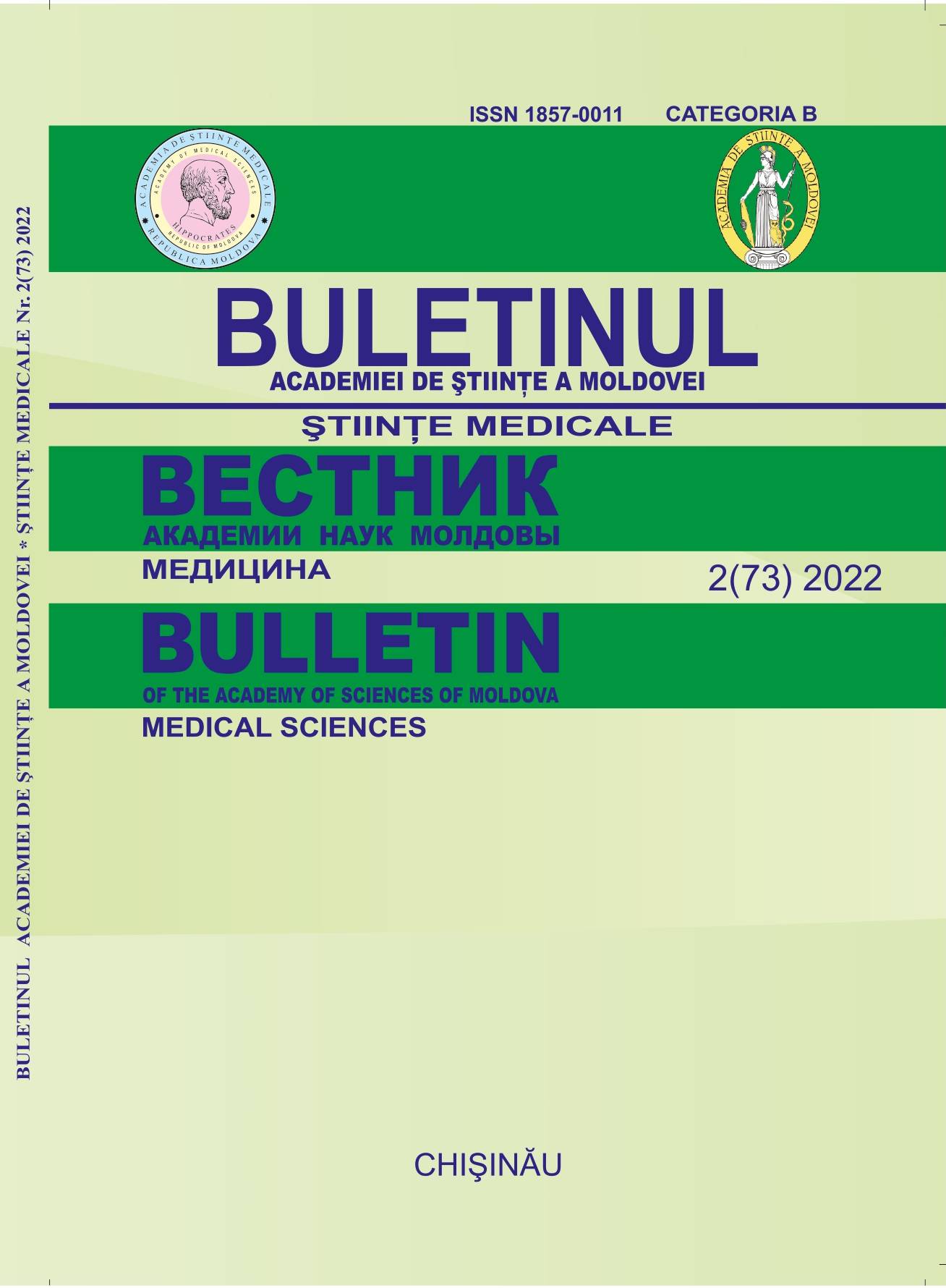Хирургическая и ортодонтическая реабилитащия детей с полной односторонней расщелины.
DOI:
https://doi.org/10.52692/1857-0011.2022.2-73.06Ключевые слова:
дооперационная ортопедия, носоальвеолярное формование, расщелина губы и небаАннотация
Ведение. Губно-челюстно-лицевые расщелины являются наиболее распространенными формами врожденных пороков развития лица и челюстно-лицевой области. Эти формы пороков развития могут быть самыми разнообразными, от простых форм до особенно сложных форм. Расщелина губы и неба характеризуется анатомическими и функциональными нарушениями. При односторонних тотальных расщелинах анатомические нарушения характеризуются деформациями костей. Верхняя челюсть делится на два сегмента щелью, проходящей над верхней губой, альвеолярным отростком и твердым и мягким небом. Клинические проявления этих форм пороков развития проявляются выраженными эстетическими деформациями лица и функциональными нарушениями, которые могут привести к необратимой цепи общеклинических заболеваний, угрожающих даже жизненно важным функциям ребенка. Актуальность. За годы исследований, с целью поиска более оптимального способа лечения расщелины неба, было описано несколько спорных методов и хирургических этапов закрытия расщелины с использованием ортодонтической предоперационной терапии носового альвеолярного восстановления и пластики неба, соответственно, в один или два хирургических этапа.Материалы и методы. Были обследованы 6 пациентов с тотальными расщеплениями неба, у которых были получены гипсовые отпечатки пальцев и учебные модели до первичного этапа пластики и после вторичного этапа пластики неба. Результаты. На основании проведенных измерений и расчетов мы пришли к выводу, что двухэтапная пластика, с пассивной терапией отделения полости рта от полости носа с помощью небных пластин, но без ортодонтической дооперационной терапии с помощью назоальвеолярных ректифицирующих тяжей, имеет эффективность 46%, в то время как пластика в один этап, но с приоритетом предоперационной трапии с периоральной межчелюстной тягой, по данным исследований Эльчина, имеет эффективность закрытия щели 76%. Выводы. Однократная пластика, предоперационно подвергающаяся ортодонтической назоальвеолярной ректификации, более эффективна в закрытии расщелины на уровне альвеолярного отростка, чем двухэтапная пластика без ортодонтической предоперационной терапии.
Библиографические ссылки
Golalipour MJ, Mirfazeli A, Behnampour N (2007) Birth prevalence of oral clefting in northern Iran. Cleft Palate Craniofac J 44: 378-380.
Grayson BH, Maull D (2004) Nasoalveolar molding for infants born with clefts of the lip, alveolus, and palate. Clin Plast Surg 31: 149-158, vii.
Bardach J, Cutting CB (1990) Anatomy of the unilateral and bilateral cleft lp and nose In Multidisciplinary management of cleft lip and palate. WB Sauders, Philedephia.
McComb H (1985) Primary correction of unilateral cleft lip nasal deformity: a 10-year review. Plast Reconstr Surg 75: 791-799
Thornton JB, Nimer S, Howard PS (1996) The incidence, classification, etiology, and embryology of oral clefts. Semin Orthod 2: 162-168.
Railean Silvia, Cristina Poștaru, Lupan I.. Curs practic de chirurgie orală și maxilo-facială pediatrică” Chișinău: Centrul Editorial-Poligrafic Medicina,2009.306 p. ISBN 978-9975-915-7.
Railean Silvia. Anomalii congenitale cranio-maxilo-faciale la copii – abordare multidisciplinară”– Centrul Editorial Poligrafic Medicina, 2020. 267 pp. ISBN 9789975-56-772-5.
Langman’s Neil, S. Norton, T.W. Sadler. Embriologie medicală” ediția a 10-a, ,,Netter altlas de anatomie a capului și gâtului pentru stomatologie”.
Kuijpers Jagtman AM, Prahl-Andersen B (1996) History of neonatal maxillary orthopedics: Past to present In Cleft lip and palate Diagnosis and management. (2ndedn), Singular publishing group, San Diego London
Grayson B.H, Santiago P.E, Brecht L.E, Cutting C.B (1999). Presurgical nasoalveolar molding in infants with cleft lip and palate. Cleft Palate Craniofac J 36: 486-498.
Georgiade N.G, Latham R.A (1975). Maxillary arch alignment in the bilateral cleft lip and palate infant, using pinned coaxial screw appliance. Plast Reconstr Surg 56: 52-60
Veau, V. Division Palatine. Anatomie. Chirurgie. Phonétique. Avec la Collaboration de Mlle S. Borel.; Impr. Darantière Masson et Cie éditeurs: Dijon/Paris, France, 1931.
Elcin Esenlik, D.D.S., Ph.D. at all ,,Preoperative Alveolar Segment Position as a Predictor of Succesful Gingivoperiosteoplasty in Patients with Unilateral Cleft Lip and Palate” Plastic and Reconstructive Surgery • April 2018, Volume 141, Number 4, 971-982pp.
Загрузки
Опубликован
Выпуск
Раздел
Лицензия
Copyright (c) 2022 Вестник Академии Наук Молдовы. Медицина

Это произведение доступно по лицензии Creative Commons «Attribution» («Атрибуция») 4.0 Всемирная.



